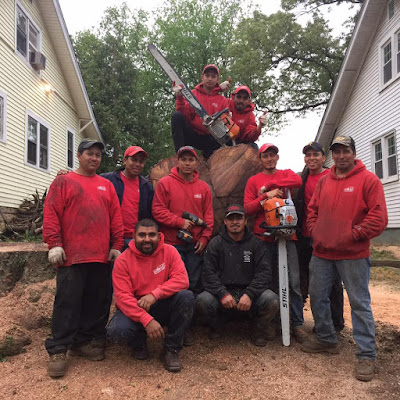With routine maintenance, gutters can protect your home or building for many years. Some homeowners choose to install gutter guards in an attempt to cut down on cleanings and extend the life of their gutter system. Gutter guards are designed to keep debris out of the gutters while still allowing water to flow freely. In general, there are three kinds of gutter guards: screens, inserts and reverse curves. Screens are basically a metal mesh that hinges or sits on top of the gutter to block large debris from entering. Inserts are meant to fill the gutter with a foam-like material that allows the water to flow through while blocking solid debris. Reverse curves utilize a convex curve that directs water into a channel and forces larger debris to drop off the gutter.
When it comes to the effectiveness and whether they are worth the investment, opinions on gutter guards vary. Here, we list the pros and cons of using a gutter guard system.
Pro: Gutter guards equal less time cleaning gutters. No gutter guard can replace regular cleanings and maintenance of your gutters, but they can reduce the frequency.
Con: Gutter guards are not completely maintenance-free. You’ll still need to maintain your gutter guard system.
Unfortunately, it’s unavoidable that debris will collect on top of the gutter guards themselves. However, rather than digging into the bottom of clogged gutters, it should be easier and quicker to remove handfuls of leaves, seeds, and twigs from the top.
It really depends on the type of gutter guard system you have – so choose wisely!
More pros:
- They can be easily added to existing gutters.
- Gutter guards prevent birds and rodents from building nests in the gutters.
- Gutter guards prevent the build-up of stagnant water in your gutters, which could otherwise back up and overflow into your home or serve as a breeding ground for insects.
- Your gutters will last longer, since they won’t prematurely rust and rot from the moisture and debris sitting in them.
- You can even get heated gutter guards that will melt icicles and snow.
More cons:
- Gutter guard installation can be expensive, costing anywhere from $700 to upwards of $1,000.
- Exaggerated ice issues are common, since melting snow and ice build-up react differently with gutter guards.
- Some gutter guard systems are practically ineffective, so you must shop carefully. Beware of the hype of high-pressure salespeople.
- If you ever lean a ladder against your gutters (when cleaning them or hanging Christmas lights, for example), the gutter guards will become dented. This will lessen their effectiveness from that point forward.
- The additional weight of gutter guards could cause your gutters to sag in the center.
- If you happen to have a steep roof or valleys (where downward-sloping sections of roof meet and water runoff is heavy), the water can overshoot the gutter guard itself.
- Tree seeds can get caught in the gutter guard slots and sprout, forming gutter trees — and some types of tree seeds grow rather quickly!
Need help with maintaining your trees this season? UnLIMBited is central Maryland’s professional tree maintenance team that provides free estimates, tree removal and takedowns, trimming and pruning, stump removal and grinding, storm damage clean-up, lot clearing, insurance work, Bobcat service, premium firewood and more. Give them a call at (443) 517-6881.
